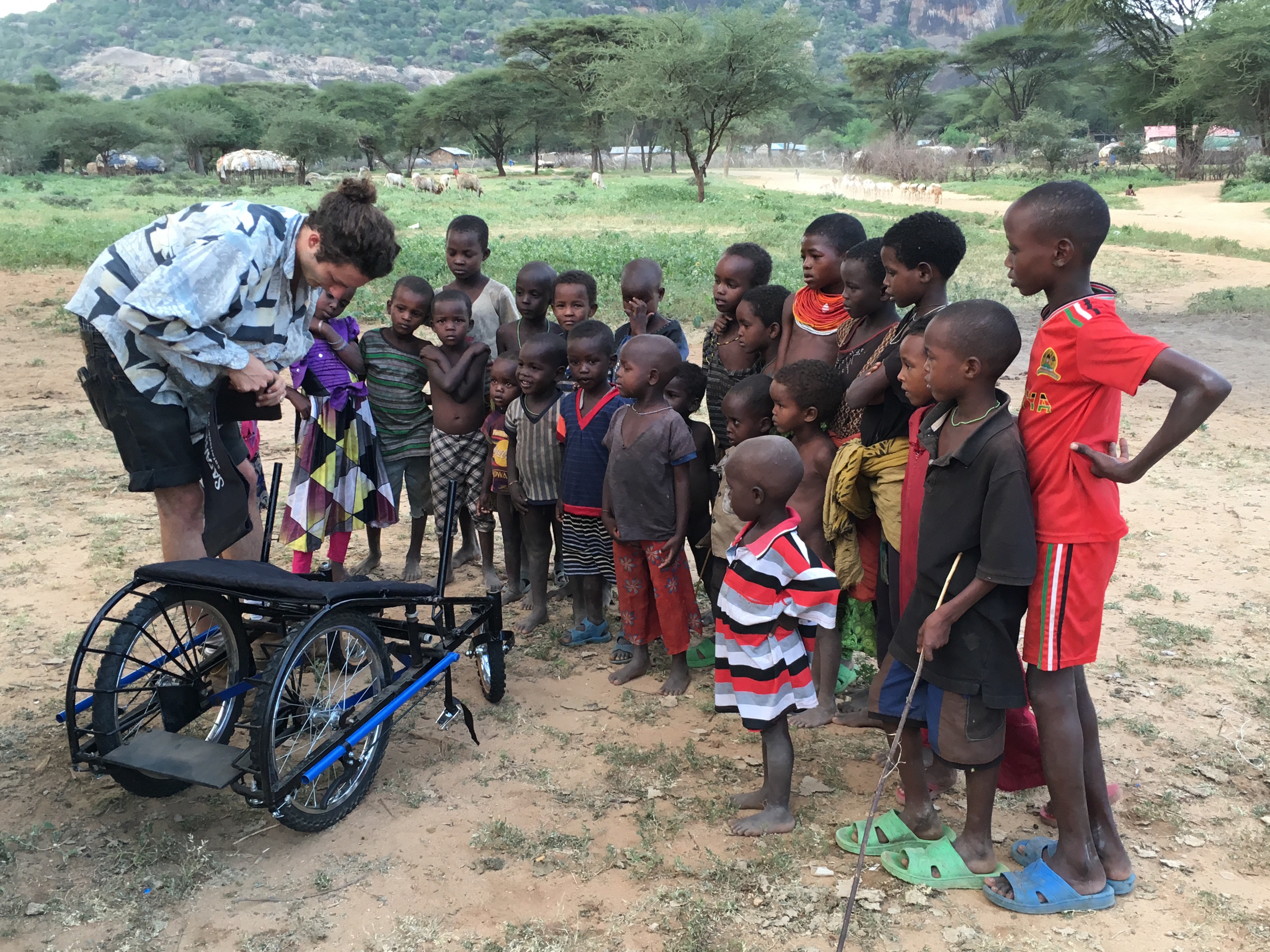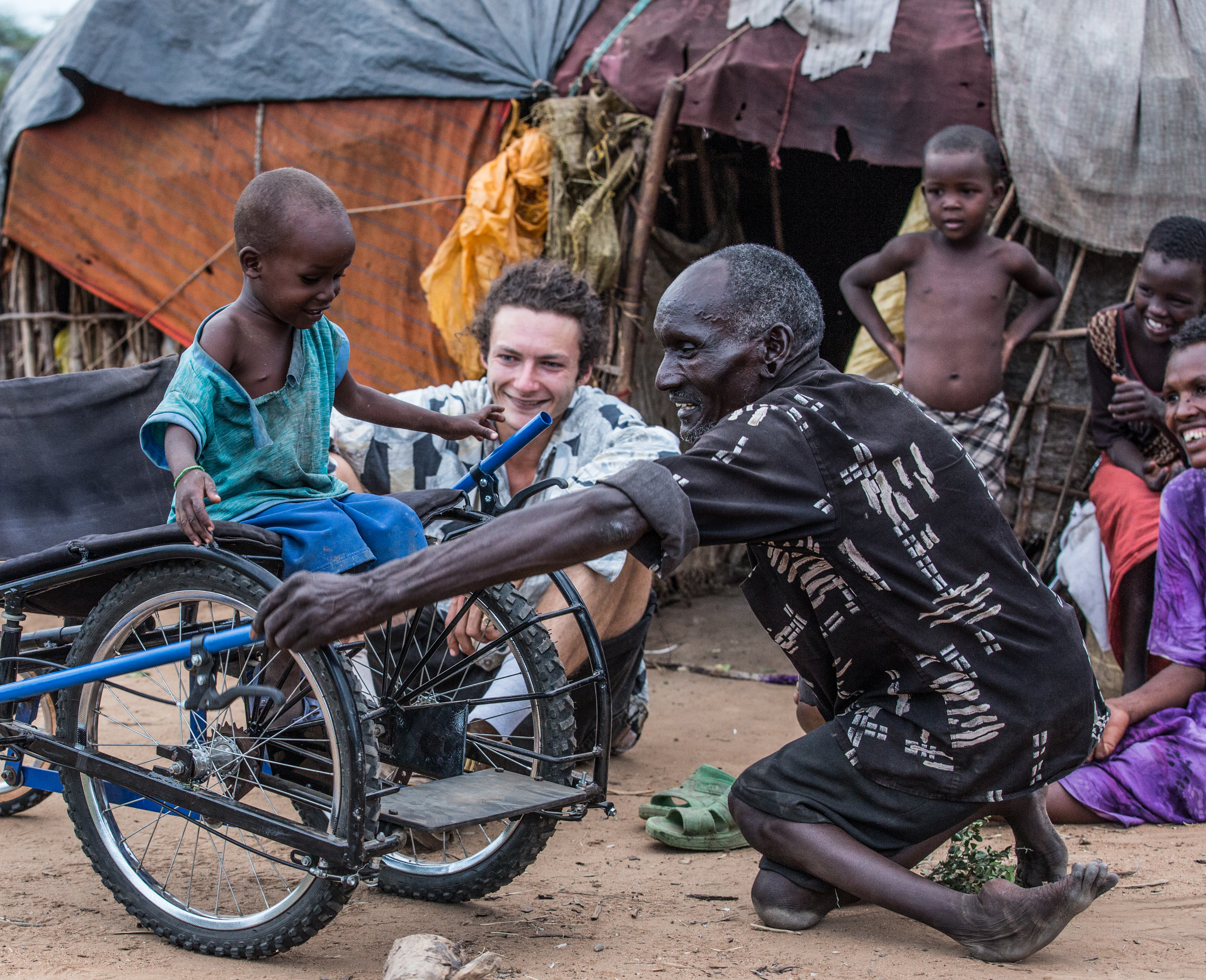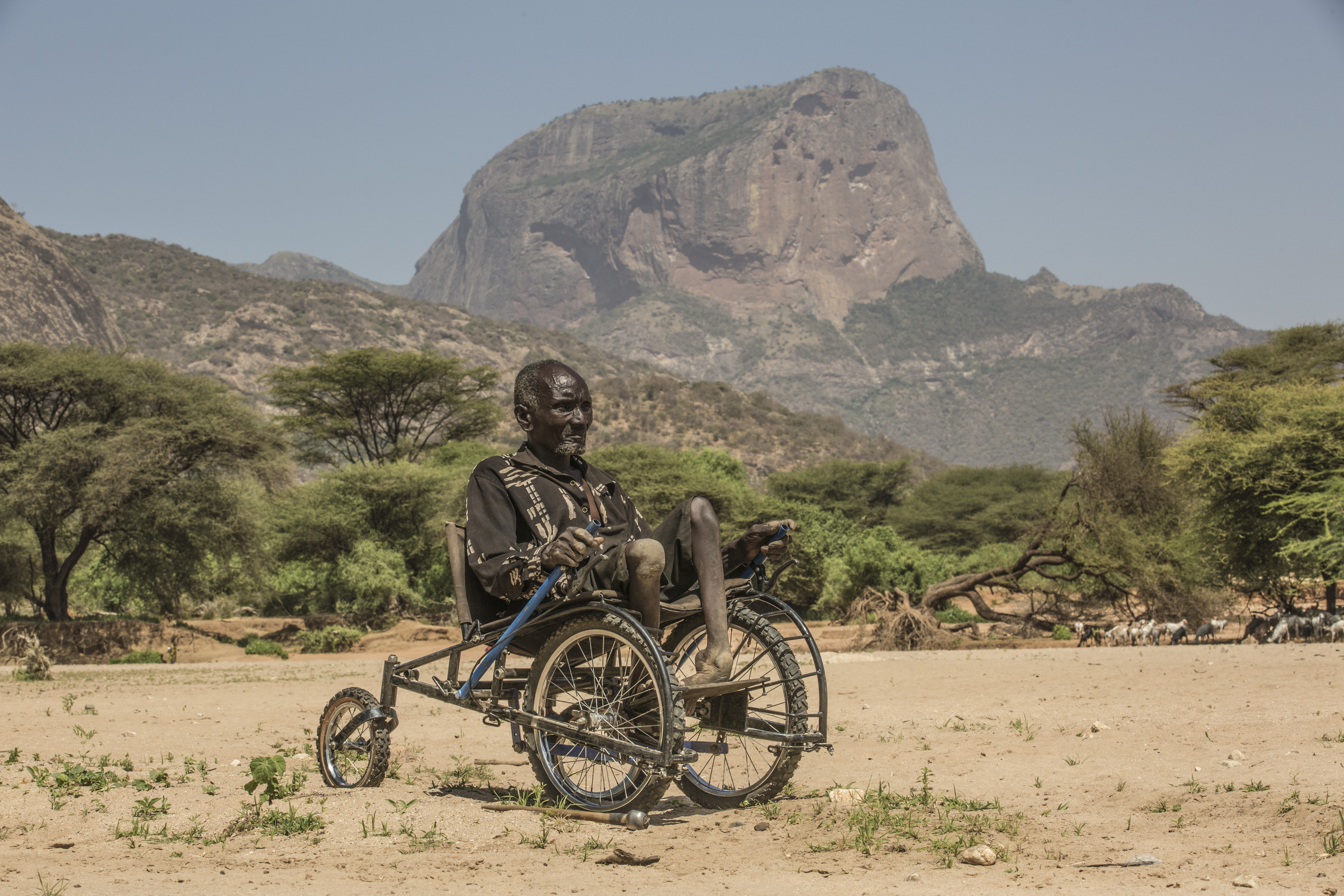“Access to a wheelchair so often depends on luck, funding and location – those in remote regions are often left stranded.”
Throughout the world, people with disabilities face significant challenges, including discrimination, inaccessible public spaces and unwillingness among employers to accommodate additional needs.
In developing countries, where rates of disability are disproportionately high, the obstacles to independence can be even greater. There, people with disabilities are routinely ostracised by their communities – and are often denied access to education, healthcare and political processes.
Spending his childhood in Kenya, Janna Deeble grew familiar with the struggles of East Africans with physical disabilities. As a young boy, he befriended Letu, a Samburu man whose childhood experience of polio had left him unable to walk. Without access to a suitable wheelchair, Letu’s only way of getting around was to crawl, which severely limited his quality of life.
As an adult, and following an accident at university in the United Kingdom, Janna spent several months in a wheelchair. Frustrated by the inaccessibility of London for wheelchair users, he began considering the additional challenges faced by people with poor mobility in developing countries.
Spurred on by memories of Letu, 23-year-old Janna designed SafariSeat, a wheelchair purposely built for use on challenging terrain. Last year, Janna launched a crowdfunding campaign via Kickstarter. While his initial aim was to attract sufficient backing for the production of 50 SafariSeats, the campaign attracted a level of backing that far exceeded Janna’s expectations; to date, the page has received over £90,000 in pledges of support. The IPF’s Health Editor, Lucy Mills, spoke to one of SafariSeat’s co-founders, Bertie Meyer, about the story so far.
What sort of challenges do wheelchair users in developing countries typically face?
In countries where sand replaces pavement and access to homes is usually via small, uneven dirt roads, life for disabled individuals can be extremely tough. Many people have no access to wheelchairs, and those who do find wheelchairs designed for a western city to be highly unsuitable for their local environment. This often leaves the individual stranded and confined to their own homes, where employment is almost impossible.
We hope that by providing a wheelchair specifically designed for the local environment, people who previously had no access to many of the services that we take for granted, like education, employment and social care, will now be able to become active and independent members of their community.
At present, how easy is it for people with disabilities to access wheelchairs in low-income countries?
There are already a number of great organisations that share a similar vision to ours, like GRIT and Motivation. We are also working in close collaboration with APDK Bombolulu (Association for the Physically Disabled of Kenya).
However, while there are many organisations working to achieve the same goal, the problem is too big to solve alone. We have found that while one wheelchair design may suit one individual, it may not suit everyone – having different organisations with different designs helps to solve this problem.
Access to a wheelchair so often depends on luck, funding and location – those in remote regions where mobility is vital are often left stranded.
How does SafariSeat work?
SafariSeat is a low-cost and all-terrain wheelchair for developing countries. The revolutionary, patented suspension system allows all four wheels to remain on the ground at all times, providing maximum stability.
It can be made in basic workshops using recycled bicycle parts and other locally-sourced items, making it easy to repair, should the need arise.
On your Kickstarter page, you state that you plan to make the blueprints for your design open-source. What does this mean?
With the development of the open source toolkit, anyone anywhere in the world will have access to the designs. We hope that this will inspire the creation of SafariSeats all around the world.
This will hopefully provide SafariSeats to a greater number of people than we ever could on our own and create local, sustainable jobs within the respective areas.

Returning to where he grew up, Janna Deeble introduces the SafariSeat to young Kenyans. [Image Credit: SafariSeat]
How did you react to the public support for your campaign?
The public support was astonishing; we managed to hit our initial fundraising target within five days of launching our crowdfunding campaign, which was the minimum [amount] needed to begin operations at a relatively small scale in Kenya.
Having tripled our original target, we are now able to expand our plans to Tanzania and Uganda, as well as implement our SafariSeat outreach programme, which will help find disabled people in the most remote regions.
Now that your Kickstarter project has been funded, what’s next for SafariSeat?
We are currently prototyping the latest SafariSeat design and testing it with local users. The feedback given is fed into the next prototype. We hope to have the final design finished by the end of April. Once the design is finished, production of the first 200 wheelchairs will begin. In conjunction with this, the open source manual is being developed ready for release in mid 2017.
What is your ultimate vision for the project?
We hope that SafariSeat will inspire the creation of small, self-sustaining business all over the world.
One day, we would like to visit countries across the globe and see SafariSeat changing lives without us ever having been there before.
To find out more about SafariSeat’s work, visit their Kickstarter page, like them on Facebook and follow them on Twitter.



